Widening the gap: Clinton tops Trump 44% to 37% in new Marquette Law School Poll
MILWAUKEE -- The release of a video showing Donald Trump making crude comments about women is causing wide swings in public opinion about the race in Wisconsin.
A Marquette University Law School poll released Wednesday, October 12th shows Hillary Clinton leading Trump by 7 points, up from 3 points three weeks ago.
The poll was taken between Oct. 6, the day before the Trump video was released, until Sunday night just before the second presidential debate.
Clinton saw her numbers improve across several demographics over the weekend, including men, women, evangelicals and non-Hispanic whites.
Overall, few voters see Clinton or Trump to be honest. Only 29 percent say it describes Clinton, compared with 33 percent for Trump.
The poll of 878 likely voters has a margin of error of 3.9 percentage points.
Below is complete analysis of the MU Law School poll as released to FOX6 News by poll officials:
A new Marquette Law School Poll finds 44 percent of Wisconsin likely voters supporting Democratic candidate Hillary Clinton for president and 37 percent supporting Republican Donald Trump, with Libertarian Gary Johnson at 9 percent and Green Party candidate Jill Stein at 3 percent. Six percent do not express a preference, saying that they will vote for neither candidate, will not vote or don’t know how they will vote.
The poll was conducted Oct. 6-9 and was completed before the second presidential debate. The poll began interviewing voters the day before the Washington Post published a story and a 2005 recording in which Trump described, in graphic detail, his treatment of women.
“The publication appears to have caused a significant shift in Wisconsin voters’ attitudes, across several different demographics,” said Charles Franklin, director of the Marquette Law School Poll.
In the previous Marquette Law School Poll, conducted Sept. 15-18, Clinton was supported by 41 percent and Trump by 38 percent among likely voters, with Johnson at 11 percent, Stein at 2 percent and 7 percent not having a preference.
In the new poll’s head-to-head matchup (as opposed to the four-way race), Clinton receives 46 percent to Trump’s 42 percent of likely voters, with 9 not giving a preference. In the September head-to-head matchup, among likely voters, Clinton had the support of 44 percent and Trump was supported by 42 percent, with 12 percent not expressing a preference.
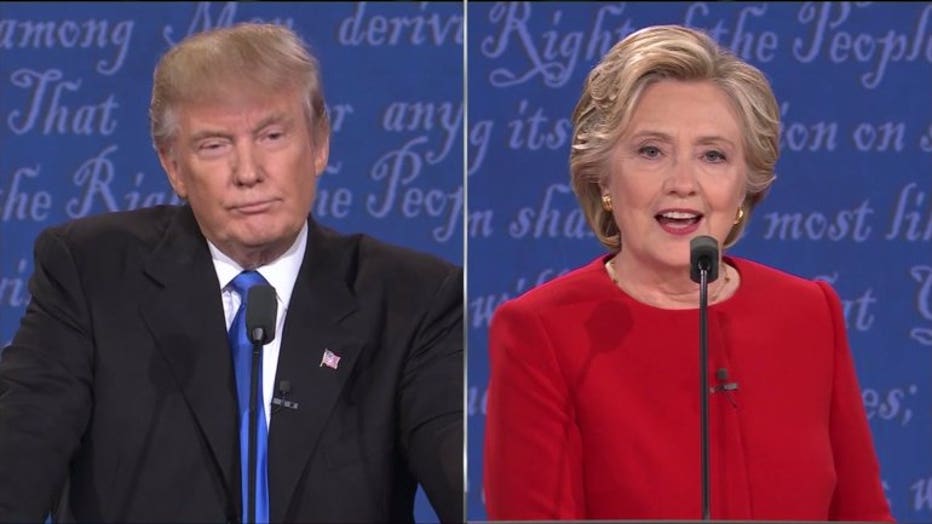
Hillary Clinton/Donald Trump: First presidential debate
In Wisconsin’s U.S. Senate race, 46 percent of likely voters support Russ Feingold, 44 percent back Sen. Ron Johnson and 4 percent choose Libertarian candidate Phil Anderson. Five percent do not express a preference. In September, Feingold was supported by 44 percent, Johnson by 39 percent and Anderson by 7 percent, with 10 percent not giving a preference.
In a head-to-head matchup, among likely voters, 48 percent support Feingold and 46 percent support Johnson, with 6 percent lacking a preference. In September, Feingold was the choice of 47 percent to Johnson’s 41 percent, with 11 percent not stating a preference.
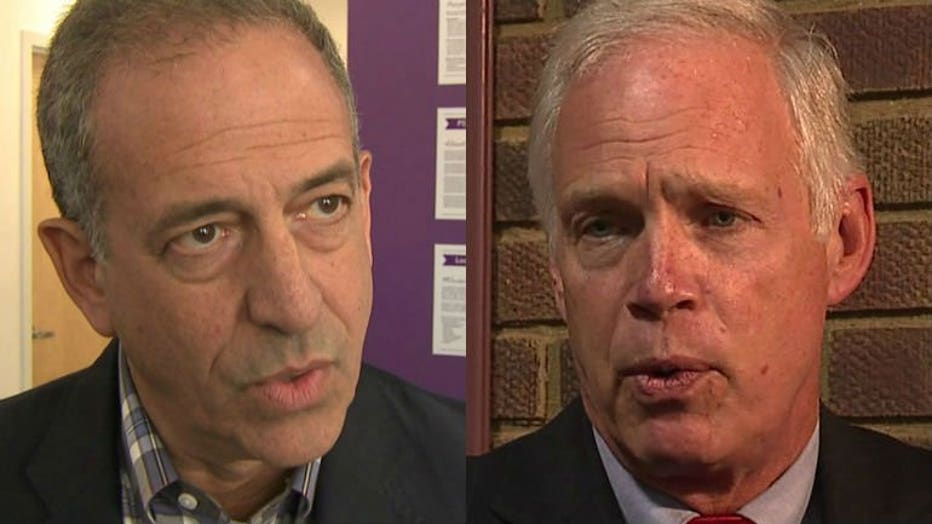
Russ Feingold, Ron Johnson
The full sample of the Oct. 6-9 survey comprises 1,000 registered voters interviewed by cell phone or landline, with a margin of error of +/- 3.7 percentage points. Results for likely voters are based on 878 respondents, with a margin of error of +/- 3.9 percentage points. When broken down by day of interview, the margin of error for Thursday‘s sample is +/- 5.9 percentage points and +/-7.8 percentage points for the Friday and combined Saturday and Sunday samples.
Shifts following release of Trump 2005 video
The October poll began interviewing voters on Thursday, one day before the Washington Post report on the 2005 Trump video. Comparing voter responses by the day interviews took place allows an estimate of how vote preferences shifted after the release.

Among all likely voters interviewed on Thursday, Trump led Clinton by 1 percentage point. Among those interviewed on Friday, Clinton led Trump by 6 percentage points. On Saturday and Sunday combined, Clinton led Trump by 19 percentage points.
| All Likely Voters | Thursday | Friday | Sat/Sunday |
| Clinton | 40 | 44 | 49 |
| Trump | 41 | 38 | 30 |
| Johnson | 9 | 8 | 9 |
| Stein | 3 | 2 | 5 |
| Clinton minus Trump margin | -1 | +6 | +19 |
Shifts are also present across several demographic and political groups. Among men, Trump’s 12-point lead on Thursday expanded to a 16-point advantage Friday but reversed to a 1-point Clinton advantage Saturday and Sunday.
| Among Men | Thursday | Friday | Sat/Sunday |
| Clinton | 35 | 28 | 40 |
| Trump | 47 | 44 | 39 |
| Johnson | 10 | 11 | 11 |
| Stein | 4 | 5 | 4 |
| Clinton minus Trump margin | -12 | -16 | +1 |
Among women, the shift was larger. A Thursday 9-point advantage for Clinton shifted to a 27‑point advantage on Friday and to a 33-point advantage on Saturday and Sunday.
| Among Women | Thursday | Friday | Sat/Sunday |
| Clinton | 45 | 60 | 56 |
| Trump | 36 | 33 | 23 |
| Johnson | 8 | 4 | 8 |
| Stein | 2 | 0 | 5 |
| Clinton minus Trump margin | +9 | +27 | +33 |
Among evangelical or born-again Protestants, one of Trump’s stronger supporting groups, Thursday saw Trump leading Clinton by 40 percentage points. That advantage shrank to 23 percentage points on Friday and to 16 percentage points on Saturday and Sunday.
| Among Protestant Evangelicals | Thursday | Friday | Sat/Sunday |
| Clinton | 24 | 32 | 31 |
| Trump | 64 | 55 | 47 |
| Johnson | 7 | 2 | 7 |
| Stein | 0 | 0 | 3 |
| Clinton minus Trump margin | -40 | -23 | -16 |
Non-Hispanic white voters without a college degree have been a strong supporting group for Trump. On Thursday, Trump held a 15-point advantage over Clinton with these voters. On Friday his advantage was 3 points, and on Saturday and Sunday this group of non-Hispanic whites without a degree favored Clinton by 7 points over Trump.
| Non-college, non-Hispanic whites |
Thursday | Friday | Sat/Sunday |
| Clinton | 33 | 38 | 42 |
| Trump | 48 | 41 | 35 |
| Johnson | 9 | 9 | 10 |
| Stein | 2 | 4 | 4 |
| Clinton minus Trump margin | -15 | -3 | +7 |
Among non-Hispanic whites with a college degree, Clinton led by 16 percentage points on Thursday, a margin that reversed to a 4-percentage-point Trump advantage on Friday before reversing again to a 26-percentage-point Clinton lead on Saturday and Sunday.
| College, non-Hispanic whites |
Thursday | Friday | Sat/Sunday |
| Clinton | 48 | 40 | 54 |
| Trump | 32 | 44 | 28 |
| Johnson | 11 | 10 | 6 |
| Stein | 5 | 0 | 6 |
| Clinton minus Trump margin | +16 | -4 | +26 |
The few Democrats supporting Trump on Thursday, 7 percent, fell to 2 percent on Friday and rose to 3 percent on Saturday and Sunday, while party loyalty to Clinton rose from 88 percent on Thursday to 95 percent on Friday and settled back to 89 percent on Saturday and Sunday.
| Democrats | Thursday | Friday | Sat/Sunday |
| Clinton | 88 | 95 | 89 |
| Trump | 7 | 2 | 3 |
| Johnson | 2 | 0 | 3 |
| Stein | 2 | 0 | 4 |
| Clinton minus Trump margin | +81 | +93 | +86 |
Republicans maintained substantial party loyalty for Trump over the four days, though not as high as Democrats showed for Clinton. On Thursday, Trump received 80 percent support from Republicans, which slipped to 70 percent on Friday before rising to 78 percent on Saturday and Sunday. Clinton received 5 percent of Republicans’ support on Thursday, 9 percent on Friday and 3 percent on Saturday and Sunday. Support for Libertarian Party candidate Gary Johnson rose from 8 percent of the Republican response on Thursday to 12 percent on Friday and 11 percent on Saturday and Sunday.
| Republicans | Thursday | Friday | Sat/Sunday |
| Clinton | 5 | 9 | 3 |
| Trump | 80 | 70 | 78 |
| Johnson | 8 | 12 | 11 |
| Stein | 2 | 6 | 1 |
| Clinton minus Trump margin | -75 | -61 | -75 |
Among independents, Clinton led by 1 point on Thursday, by 4 points on Friday and by 15 points on Saturday and Sunday.
| Independents | Thursday | Friday | Sat/Sunday |
| Clinton | 33 | 38 | 40 |
| Trump | 32 | 34 | 25 |
| Johnson | 18 | 11 | 15 |
| Stein | 5 | 0 | 7 |
| Clinton minus Trump margin | +1 | +4 | +15 |
Comparison of candidate traits
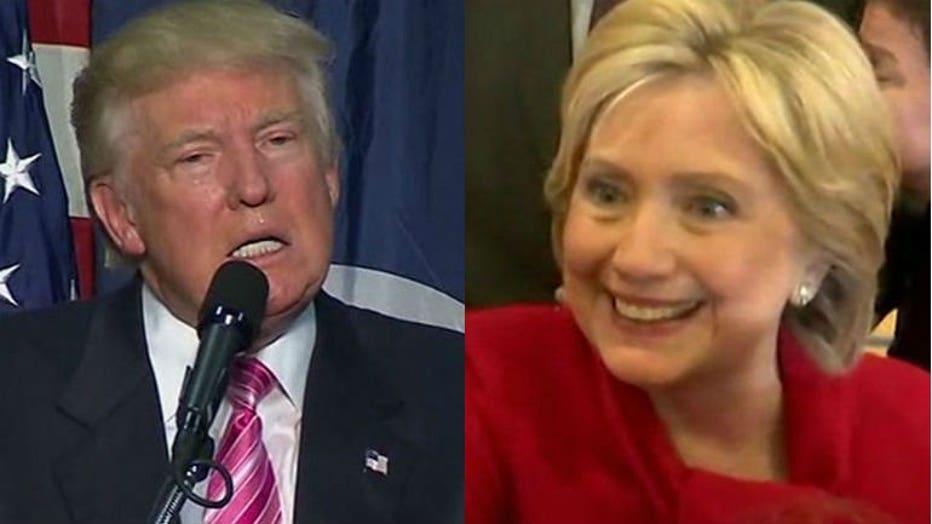
Donald Trump/Hillary Clinton
Asked if “honest” describes Clinton, 29 percent of likely voters say that it does, while 66 percent say that it does not. For Trump, 33 percent say “honest” describes him, while 64 percent say it does not. In September, 32 percent of likely voters described Clinton as honest and 64 percent did not. Thirty-four percent described Trump as honest in that poll, while 63 percent did not.
Forty-seven percent of likely voters describe Clinton as someone who “cares about people like me” and 50 percent do not. Thirty-five percent say Trump cares about people like them while 61 percent do not see him this way. In September, 46 percent described Clinton as caring while 52 percent did not. In that poll, 36 percent said Trump cares while 61 percent did not see him that way.
Asked if a candidate has the qualifications to be president, 58 percent say Clinton does, while 40 percent say she does not. Thirty-three percent say Trump has the qualifications to be president, while 65 percent say he does not. In September, 60 percent described Clinton as qualified and 39 percent said she was not, while 37 percent described Trump as qualified and 61 percent said he was not.
The October poll asked for the first time if “shows good judgment” describes each candidate. For Clinton, 48 percent of likely voters said this describes her while 50 say it does not. For Trump, 28 percent say “shows good judgment” describes him with 70 percent saying it does not.
Respondents were asked how comfortable they were with the idea of each candidate as president. Forty-six percent of likely voters say they are very or somewhat comfortable with Clinton as president, with 53 percent very or somewhat uncomfortable, including 44 percent saying they are “very uncomfortable.” For Trump, 35 percent say they are very or somewhat comfortable with him as president, while 63 percent say they are very or somewhat uncomfortable, including 53 percent saying “very uncomfortable.” In September, 47 percent were very or somewhat comfortable with Clinton and 53 percent were very or somewhat uncomfortable. For Trump in September, 36 percent were very or somewhat comfortable and 64 percent were very or somewhat uncomfortable.
Views of Senate candidates
Each party has strongly aligned behind its candidate for the U.S. Senate. Johnson receives 89 percent of Republicans’ support, Feingold 7 percent and Anderson 2 percent. Among Democrats, Feingold receives 90 percent to 5 percent for Johnson and 2 percent for Anderson. Independents give 44 percent to Feingold, 37 percent to Johnson and 9 percent to Anderson. For comparison, among likely voters, Trump receives 77 percent of the Republican vote and Clinton 90 percent of the Democratic vote, while independents divide 37 percent for Clinton to 30 percent for Trump.
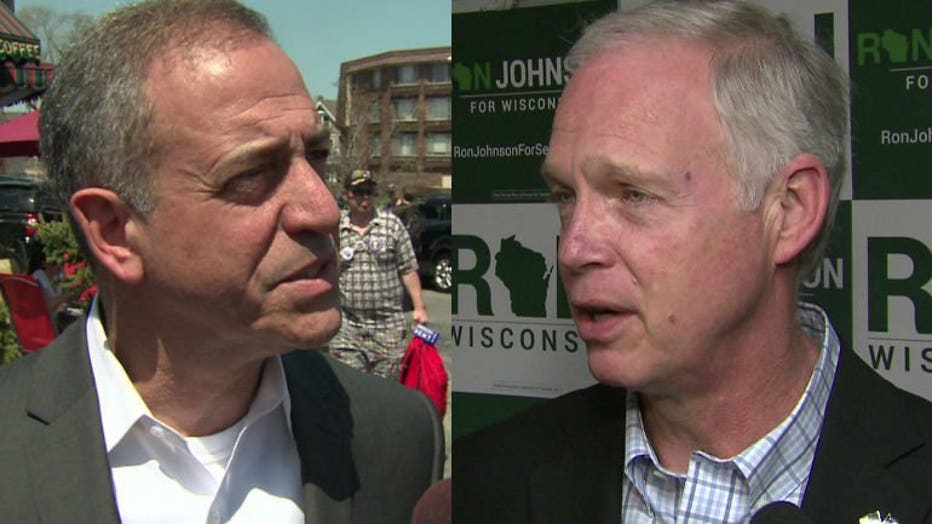
Forty-five percent describe Johnson as someone who “cares about people like me,” while 41 percent say this does not describe him. Fifty-two percent describe Feingold as caring about people like them, while 36 percent say that this does not describe him. In September, 37 percent described Johnson as caring while 43 percent said this did not describe him. At that time, 50 percent said Feingold cares and 33 percent said he did not.
Forty-nine percent in the October poll say “honest” describes Johnson and 33 percent say it does not. Fifty-two percent say “honest” describes Feingold and 36 percent say it does not. This question had not been asked before.
Among all likely voters, 43 percent have a favorable view of Johnson, 37 percent hold an unfavorable view and 20 percent say they haven’t heard enough or don’t know how they view him. Feingold is viewed favorably by 45 percent, unfavorably by 40 percent, and 15 percent say they lack an opinion of him. Anderson is viewed favorably by 4 percent, unfavorably by 7 percent, and 89 percent lack an opinion of him. In September, Johnson was seen favorably by 35 percent of likely voters, unfavorably by 39 percent and 26 percent lacked an opinion. Feingold was viewed favorably by 48 percent, unfavorably by 32 percent, and 19 percent lacked an opinion of him. When last asked in August, 3 percent had a favorable view of Anderson, 4 percent an unfavorable view and 92 percent did not have an opinion of him.
Job approval of Walker and Obama
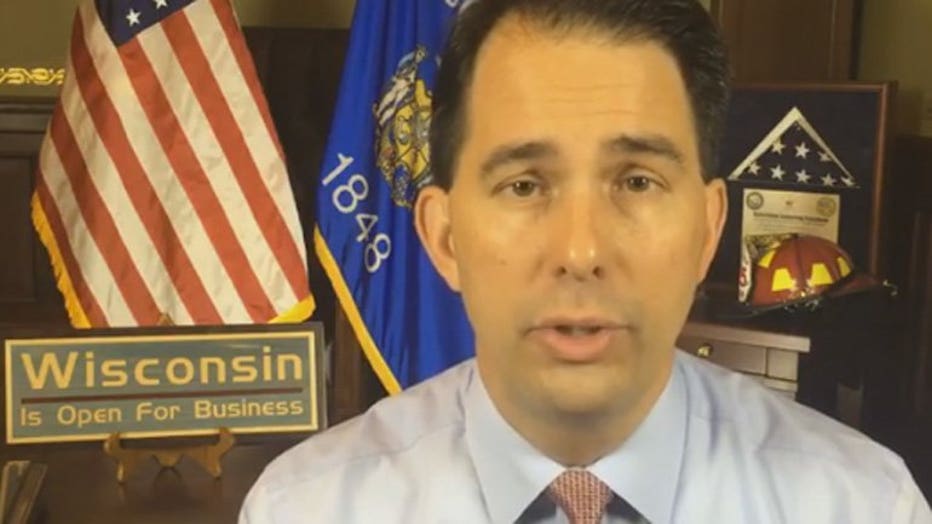
Gov. Scott Walker
Approval of how Wisconsin Gov. Scott Walker is handling his job stands at 44 percent, with disapproval at 51 percent among all registered voters. In September, approval was 43 percent and disapproval was 52 percent.
President Obama’s job approval stands at 52 percent, with 43 percent disapproval. In September, 54 percent approved and 41 percent disapproved.
About the Marquette Law School Poll
The Marquette Law School Poll is the most extensive statewide polling project in Wisconsin history. This poll interviewed 1,000 registered Wisconsin voters by landline or cell phone, Oct. 6‑9, 2016. The margin of error is +/-3.7 percentage points for the full sample. For likely voters, the unweighted sample size is 878 and weighted sample size is 839, with a margin of error of +/-3.9 percentage points. When broken down by day of interview, the margin of error for Thursday‘s sample is +/-5.9 percentage points and +/-7.8 percentage points for the Friday and combined Saturday and Sunday samples.
The partisan makeup of the full registered-voter sample, including those who lean to a party, is 44 percent Republican, 47 percent Democratic and 8 percent independent. The long-term estimate over the previous 39 statewide Marquette polls, with 33,751 respondents, is 42 percent Republican and 48 percent Democratic, with 9 percent independent. The partisan makeup of this sample, excluding those who lean to a party, is 30 percent Republican, 31 percent Democratic and 35 percent independent, compared to the long-term estimate of 27 percent Republican, 31 percent Democratic and 38 percent independent.
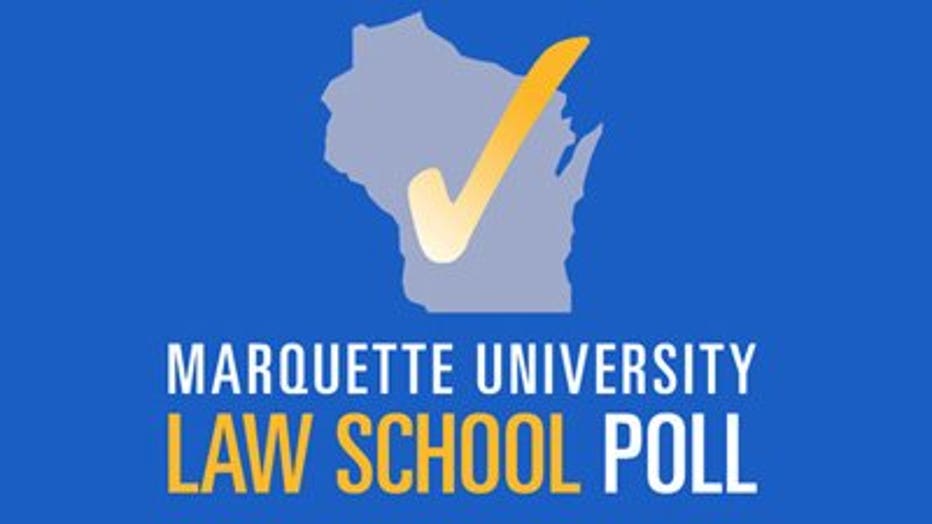
The entire questionnaire, methodology statement, full results and breakdowns by demographic groups are available at law.marquette.edu/poll.

